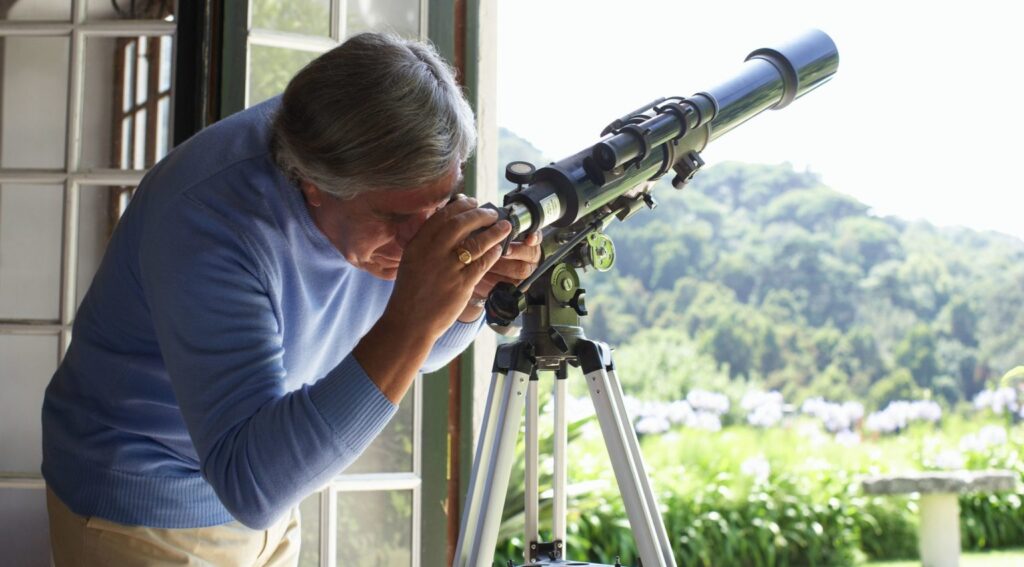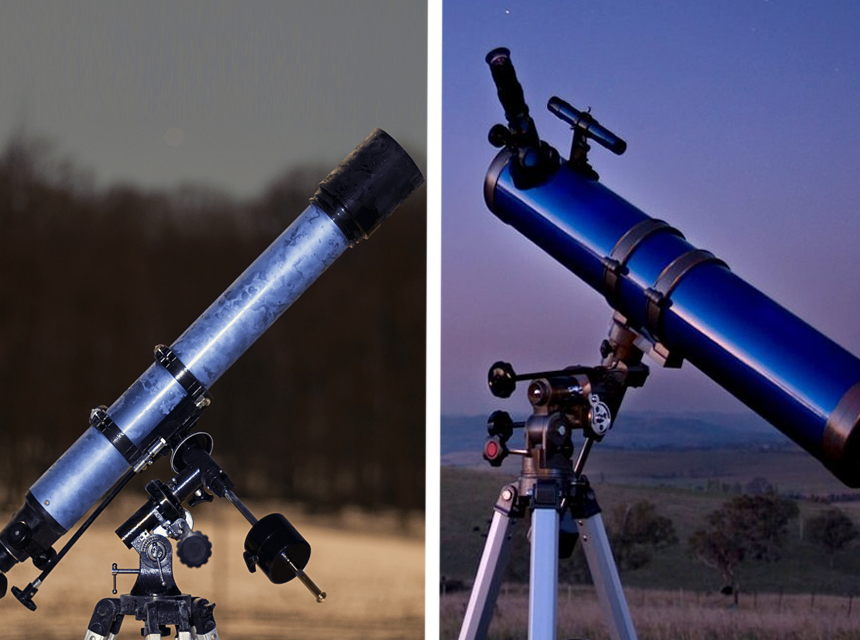Ever see those beautiful pictures of what seems like something out of this world, of another galaxy or even planet—well, those pictures are the results of astrophotography. This specialized photography that makes it possible to take photos and capture our beautiful universe in motion is something that can only be done with the right equipment. Whether you want to be able to take pictures of the moon, planets, stars, and distant celestial objects, the best telescope for astrophotography can help.
We know that there are plenty of brands and products to choose from when it comes to picking the best telescope for you, your skill set, and your price range. Which is why we’ve put together this review. Throughout this article, you’re going to find the top seven telescopes we bid are great for your newest hobby (or money-making venture), and highlight what features are important according to type, aperture, weight, focal length, ration, and warranty. We’ve created a list of the top 7 picks, where the Sky-Watcher ProED 120mm turned out to be truly the best.
More features: Schott BK-7 and FPL-53 ED glass, 8×50 RA erect-image finderscope, 2″ dielectric diagonal
Whether you’re a beginner or looking for your new favorite model, the Sky-Watcher ProED can be considered the best all-around telescope for astrophotography.
As a refractor telescope with a 120 mm aperture, you are able to capture a pretty clear picture of the planets and celestial objects that you’re aiming for. The telescope has an ED Schott glass with a 900 mm focal length (f/7.5), which makes it pretty high up there regarding focal length—an important feature when considering how clear the picture should be.
The dual-speed 2″ Crayford-type focuser with a 1.25″ adaptor is also another added bonus when talking about the best features out there on the market.
The viewfinder is measured with a 8×50 RA and a 2″ dielectric diagonal, which puts it at top of its class, as well. The Sky-Watcher ProED has tube-ring attachment hardware and even comes with an aluminum carry case to make transporting to and from your viewing area a breeze.
The Sky-Watcher ProED functions with high-performance ED-APO refractors and offers premium optical performance for the amateur and beginning astronomer.
Especially since this type of telescope are known for superb contrast, high-definition and coal-black sky background, you can rest assured that the stars and other objects of your picture will shine brightly.
The Sky-Watcher ProED is backed by a 2-year limited warranty.
More features: alt-azimuth mount, 661x magnification, 40,000+ celestial objects database, 9×50 finderscope
If you’re looking to upgrade on a telescope, the aperture and focal length alone on the Celestron StarBright XLT make an excellent choice to go further into space.
Not only does this Schmidt-Cassegrain telescope have optical system performance and transmission, it also shows a great deal of incoming light on the focal plane, making for pretty clear pictures.
If you are looking for the telescope that can develop a coating system optimized for both visual use and for CCD/photographic imaging, this is it.
The Celestron StarBright XLT works with not only a 280 mm aperture and a 2800 mm focal length that will put you right into outer space, but it also has three major components that solidify the high-transmission optical system design.
The uniquely enhanced multi-layer mirror coatings are designed with aluminum, SiO2, TiO2, and Si02, which makes it not only great for observing in real-time but also taking high-quality photographs.
The multi-layer anti-reflective coatings are designed with MgF2 and HfO2, which makes it possible to increase the width of the band pass.
You’ll also notice that for the corrector lens, high-transmission water white glass is used instead of soda lime glass, making it extremely anti-reflective and the image highly improved.
More features: alt-azimuth single fork mount, stainless steel tripod, 40,000 celestial objects database, SkyAlign technology
The Celestron NexStar 5 SE has deep focal length as one of the best telescopes on the market for deep space astrophotography.
With a 125 mm focal length and a f/10 focal ratio, this Schmidt-Cassegrain Telescope is definitely one of the most powerful and versatile ones on the market. However, not only is it versatile, it is also highly use friendly, also coming with various objects that make a complete package for someone looking to observe high-quality celestial objects.
Not only is it backed by a 2-year warranty, it also only weighs 17.6 lbs, putting it as one of the lightest telescopes on the market, making it extremely easy to transport. Celestron’s proprietary StarBright XLT multi-coating system makes the images and your viewing extremely bright since light transmission sees an increase in the optical path.
The telescope also uses anti-reflection multi-coated lenses, highly reflective multi-coated mirrors, and crown optical glass elements, to give you the best picture out there. The Celestron NexStar 5 SE also has a variety of other features that make it a complete system, great for deep space viewing. With its mount’s precision tracking system and integrated equatorial wedge, you’ll be able to photograph and view images even as they move across the night sky.
You’ll also be getting a Single-Fork Motorized GoTo Alt-Az Mount, a 25mm Eyepiece and StarPointer Finder, SkyAlign Alignment Technology, a NexStar+ Computer Hand Controller,a 40,000+ Object Database with Sky Tours, and a Stainless Steel Tripod.
More features: 2” single-speed rack-and-pinion focuser, 4-element Plössl 25 mm and 10 mm 1.25” eyepieces
The SkyWatcher S11600 is rated as one of our best reflector telescopes for astrophotography, and with these features, it’s easy to see why:
This telescope boasts not only a 152 mm Aperture but also a 1,200 mm focal length and f/8 focal ratio, which makes it extremely simple to use and easy to track celestial objects in the sky.
The SkyWatcher S11600 also has a 2″ Single-Speed Rack-and-Pinion Focuser as well as two different eyepieces to choose from. You can either choose between a 25 mm one or a 10 mm one.
This telescope also uses a 6×30 Straight-View Finderscope, a tension control handle, and a floor-based manual Alt-AZ mount. This is a great telescope to have as you utilize its dual axis Teflon bearings and its altitude tension clutch.
Not only does it look good, it also performs well, with the large light bucket that offers a great look in accordance with performance.
The telescope works primarily with its big parabolic primary mirror, which is extremely reflective. It also eliminates the normal amount of distortion that is often associated with spherical aberration, especially at the edges.
More features: equatorial mount, 269x magnification, no tool setup, StarPointer finderscope
The Celestron AstroMaster 114 EQ is one of the best budget-friendly telescopes for beginner or astrophotographers who are not looking to break the bank when looking for a telescope.
Whether you’re an older child or a beginner adult, the Celestron AstroMaster 114 EQ is a great telescope that provides clear and bright images of any celestial objects that you may want to see.
Whether it is one of the planets or different galaxies, the Celestron AstroMaster 114 EQ can be set up on a mount, track objects as they move throughout the night and do everything manually through slow-motion adjustment cables.
What makes this telescope extremely user-friendly is the fact that in about five minutes, you can learn how to follow the stars and take photographs of any other celestial objects. You don‘t need tools to set up the telescope and you don’t need any level of experience to be able to use it.
The permanently-mounted StarPointer finder scope centers the object of your photograph directly in your eyepiece. You can also use the Celestron AstroMaster 114 EQ for either terrestrial or astronomical use. The rugged pre-assembled tripod has 1.25″ steel tube legs for sturdy mounting. The Celestron AstroMaster 114 EQ also comes with TheSkyX First Light Edition planetarium software, which has a database of 10,000 objects and images.
More features: three replaceable eyepieces included, 3x Barlow lens, adjustable aluminum tripod, fully coated optics glass lens
The Gskyer AZ is a great refractor telescope to have as a set—especially if you need a few for your classroom.
Especially since they are well fit for the beginner, the Gskyer AZ comes with a set designed for the complete package.
Only weighing 18 lbs, this telescope is extremely useful in a classroom setting when it needs to be transported from one part of the room to the next or moved in between students.
It also is a great choice when you’re looking to have the complete package included—with a mounting knob, safety screw and dovetail bracket. The set is easy to assemble and easy to attach to the mount and tripod.
You’ll also be able to focus without much experience with the Gskyer AZ. The part of viewing where you’re enhancing the quality and clarity of the images is in important part of astrophotography, and with the unit’s sports-coated anti-reflection blue-film components, you’ll be able to do so with ease and see the image without ANY internal reflection. This helps produce non-distorting images.
You can also utilize the three eyepieces included for every different viewing situation, making the entire unit completely adaptable.
More features: 6×30 finder scope, 2 Sirius Plossl eyepieces, 2’’ focuser, adjustable-height aluminum tripod
The Orion 9005 AstroView is a pretty solid buy as one of our best beginner telescopes if you’re looking into pursuing astrophotography as your hobby.
With its wide-field refractor build, you are able to pick up on deep-sky objects as if they were right there in front of you. The crystal clear resolution, along with its 120 mm aperture and 600 mm focal length makes it possible to view even the most distant celestial objects, even for a beginner’s telescope.
The Orion 9005 AstroView is a refractor telescope that is perfect for taking photos of nebular clouds, star clusters, and galaxies, as well as reaching great quality pictures of the moon and planets.
When you purchase the Orion 9005 AstroView, you’ll also be getting an adjustable tripod, as well as an equatorial mount for manual slow-motion celestial tracking. This can help if the celestial object you’re viewing is in motion. This telescope also comes with an internal polar alignment scope for precision performance.
Not only does the package stop there—it also comes with two Sirius Plossl 1.25″ eyepieces, a 6×30 finder scope, a smooth 2″ rack and pinion focuser, a 90-degree mirror star diagonal, and Starry Night astronomy software, making it the perfect buy for a beginner.
Before you buy, there might be a few finer details that you might want to consider—after all, the details play a huge role in science. To help you score the best telescope for the type of astrophotography you’re looking for, here is a buying guide with all the information you need to make an educated purchase:

Deep Space: This type of photography will focus on distant galaxies and nebulae. It requires a bit more experience and is a little more complicated. You’ll have to factor in star trails, light pollution, editing software, and more accessories than just your basic telescope.
Solar System: This type of photography is just as it says it is—based on our entire solar system. With this type, you can simply use a variety of telephoto lenses.
Wide Angle: Just like that panorama feature on your phone, the wide angle astrophotography will increase the wide field of view, for landscape photos that can fit the entire Milky Way, for example.
Time-Lapse: Just as the name suggests, this type means you’re taking various exposure photos over a course of time. You can use this to track star trails or other celestial movements.
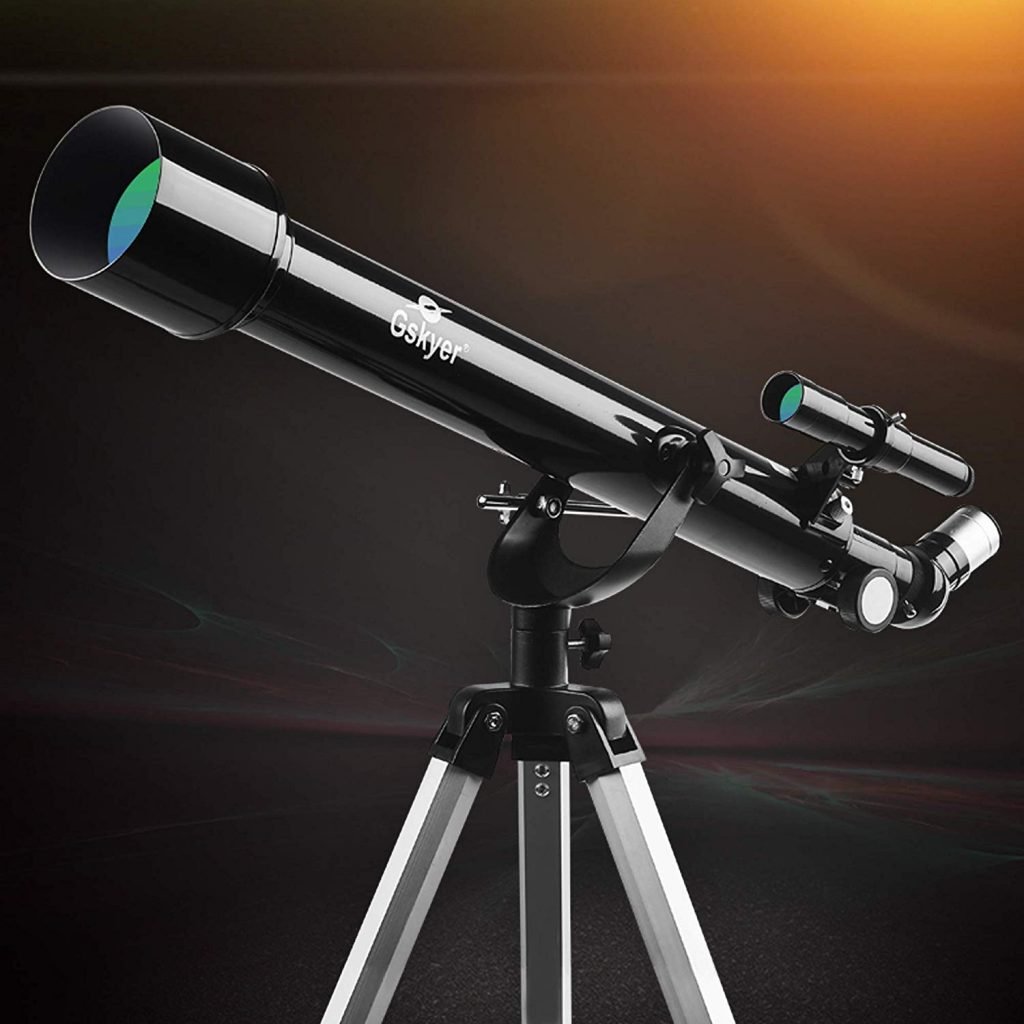
Refractor telescopes: As the most common—Sky-Watcher ProED as one of the best—this type of telescope uses a long tube and a large lens, with an eyepiece at the other end.
Reflector telescopes: Instead of a lens, this type uses two mirrors—like the SkyWatcher S11600. Its build is the same as a refractor except the eyepiece is located on the side.
Catadioptric Telescopes: Using mirrors and lenses, this type is much more modern in designed. Used with battery-operated computerized mounts, you can maneuver this type of telescope to easily spot what you’re looking for.
Schmidt-Cassegrain telescopes: Using light’s trailing path through a correcting plate, this telescope uses two mirrors to form an image at the eyepiece.
Maksutov-Cassegrain telescopes: Using both mirrors and lenses as well, this telescope differs from the Schmidt-Cassegrain because it uses different spots and types of mirrors.
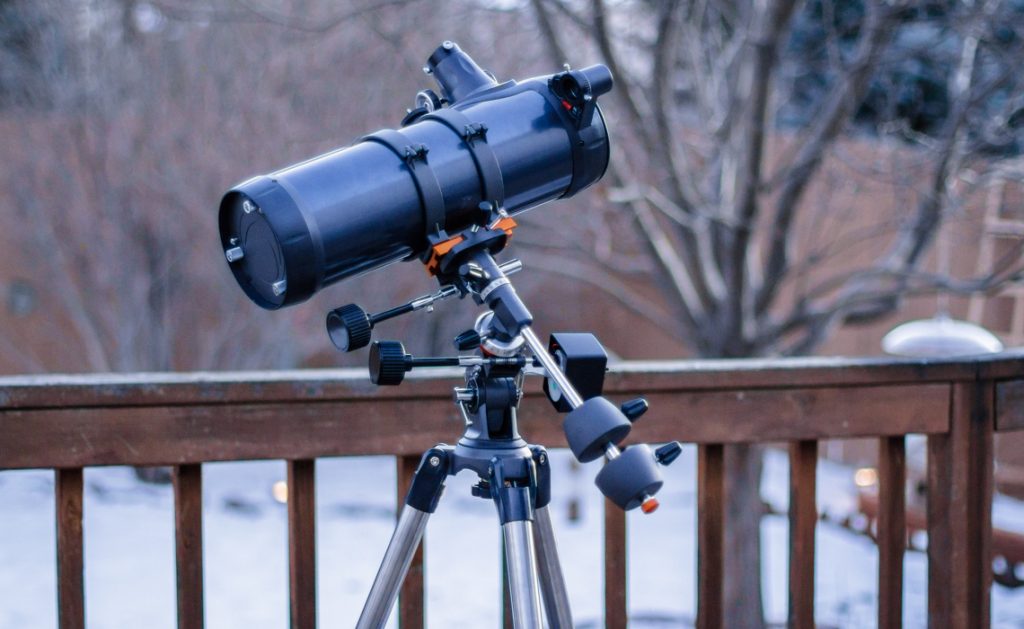
Most of these telescopes come with attachment kits or at least are compatible with them, which include T-mount adapters, eyepieces, and camera-specific adapters.
Choosing a telescope with the kit already included saves you the trouble of looking for a specific T-ring and T-thread. Once you have the kit, you can take off the eyepiece and attach the T-ring. Remove the eyepiece from the camera and attach the T-ring by screwing it onto the threads, if it’s an easy enough set-up then it will be relatively quick.
Especially for a beginner, you might need to be on the lookout for a few things. Here are some tips and tricks if it’s your first time taking on this hobby:
1. Details while operating is important. Especially if you want to get the most accurate image, you’ll want to make sure that the flash is off when it’s supposed to be and that the exposures and settings are fit to the picture you want to have at the end.
2. Don’t underestimate the power of the sun. You already know how damaging the sun can be to your naked eye, so be wary of it while doing astrophotography. This can quickly and even permanently hurt your eyes.
3. Do your research beforehand. Getting to know the solar system, certain constellations and a general scope of information about where things are is extremely helpful in astrophotography.
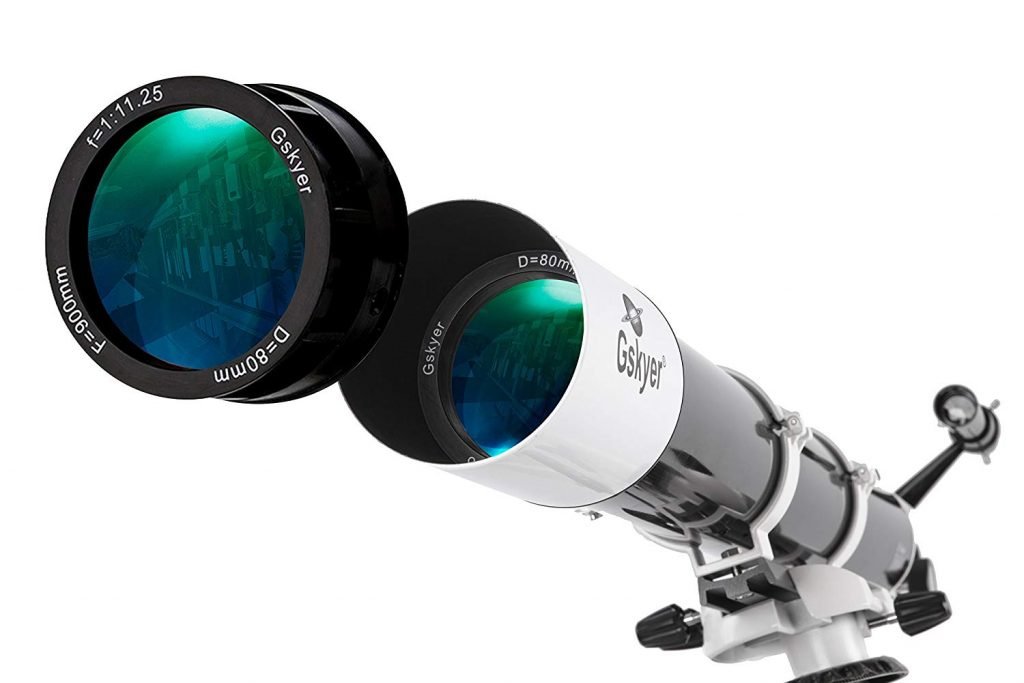
Aperture is the measurement of how big or small the telescope opening is that lets in all the light. This is easily THE most important attribute of any telescope. Especially since the main component of how a telescope functions is the light, the aperture is key to a quality telescope.
Just like something is only good if it has a solid foundation, the best telescope needs a stable, smooth mount. If you’re going to be transporting the telescope to other places for star-gazing, you’ll need to have a mount that is also lightweight.
There are two different types of mounts: altitude-azimuth (or “alt-az”) and equatorial.
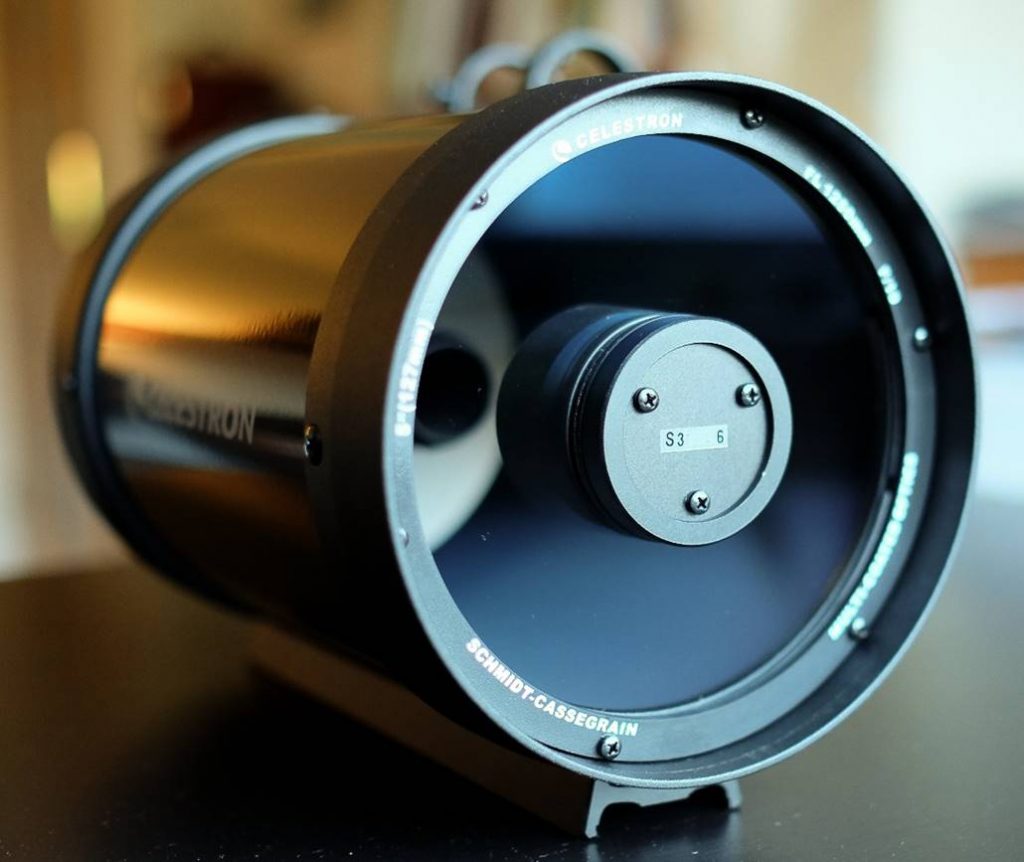
The focal length is responsible for taking the distance from the objective lens or mirror at which the light comes to focus. If you have a longer focal length, your image will be larger and your magnification will be higher.
However, be aware that the higher the magnification, the more distorted your image might show up!
This focal ratio is the speed of which the light is gathered. If you have a faster focal ratio, you’ll need less exposure and you’ll gather light much quicker.
Finding the sweet spot with magnification is important since it will dictate how much an image is magnified for detail and not being too magnified so that it isn’t blurry.
If you’re planning on just looking at galaxies and nebulae, you won’t need a very high power magnification. You’ll need a medium-high power for a variety of planets, and a higher power for anything further.
Especially if you are kind of inexperienced with the night sky, doing your research can only get you so far. Having a finder, when used with medium or high power, can help you locate the celestial objects you’re looking for.
If you have any of these telescopes, you’ll need one, and a reasonably high-quality one, at that. The aperture should be larger than 25 mm to make much of a difference.
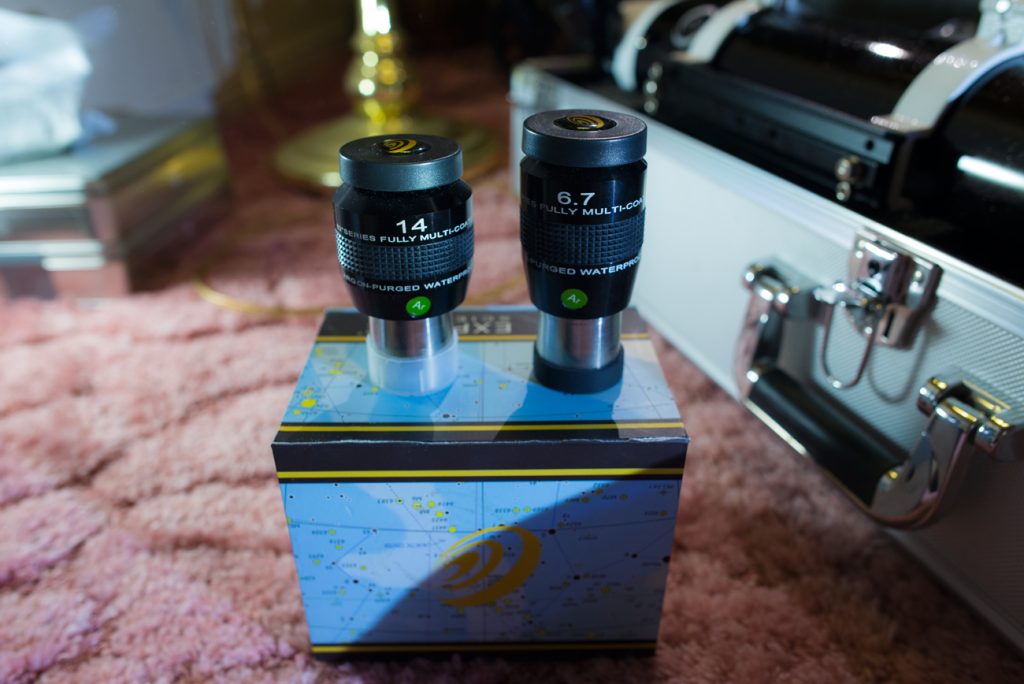
If you want to get a little unique, you can get a telescope with a wide-angle eyepiece. However, you’ll always be needing a cross-hair eyepiece for guiding or centering a guide star.
Especially if you are planning on transporting your telescope here and there, one that has an adequately light weight is preferable. Especially if it’s cold outside, the last thing you would want to do is carry an extremely heavy telescope up a trek.
Most of the telescopes we outlined here for you are going to be backed by a 1 to 2-year warranty, which seems to be about the average time span for a telescope of this caliber.
For your most frequently asked questions about astrophotography and its telescopes—here are our answers:
If you’ve skipped our entire guide, here is our opinion on the three best telescopes for astrophotography on the market:
The Sky-Watcher ProED is our editor’s choice for the best telescope on the market. Backed by a 2-year warranty and weighing only 30 lbs, this refractor telescope has an aperture of 120 and a focal length of 900 mm.
The Celestron StarBright XLT is our next recommendation if you’re looking for an upgrade pick. As a Schmidt-Cassegrain type, it’s a little bit more advanced. Even though a bit on the heavier side at 65 lbs, it makes up for it in detail, with a 280 mm aperture and a focal length of 2800 mm. It also comes with a database of 40,000+ celestial objects database.
The Celestron NexStar 5 SE is our pick for deep space on the market for telescopes. Lightweight but powerful computerized telescope will hold your camera to make the most amazing deep space pictures.
We hope that this guide has helped you get the best telescope for astrophotography to guide you through the stars!

